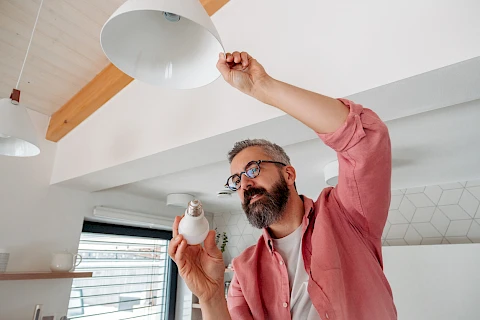
You should make sure your senior loved one's home is safe and comfortable. Simple home modifications can go a long way in preventing accidents and allowing seniors to live independently. We want to guide you through various tips on how to improve home safety for seniors, from installing grab bars to improving lighting and enhancing accessibility.
Assessing Home Safety Needs
Before jumping into modifications, it's essential to understand the specific needs of the senior living in the home. Conducting a home safety audit can help you identify potential hazards. Walk through the house and look for high-risk areas like staircases, bathrooms, and kitchens. Make sure to involve the senior in the assessment process; they can provide valuable insights into areas where they feel less secure.
Installing Grab Bars
Grab bars are one of the most effective ways to prevent falls in the bathroom. They provide extra support and balance. Key locations for grab bar installation include next to the toilet, inside the shower, and along staircases.
If you're handy, you can install grab bars yourself. Choose the right locations, use a stud finder to locate wall studs, drill pilot holes, and secure the bars with screws. However, when in doubt, it's best to hire a professional to ensure the bars are securely installed and can support the required weight.
Improving Lighting
Good lighting is vital for senior safety. Poor lighting can lead to trips and falls in dim hallways or staircases. Recommended lighting enhancements include adding brighter bulbs, installing nightlights in dark areas, and using motion-sensor lights.
For those who prefer DIY solutions, swapping out old bulbs for brighter, energy-efficient ones can make a big difference. Place nightlights in hallways and bathrooms to help seniors navigate at night.
Enhancing Accessibility
Improving accessibility can make daily activities easier and safer for seniors. Widening doorways and hallways can provide easier access for wheelchairs and walkers. Ramps and stairlifts are also beneficial for seniors who have difficulty with stairs.
While some of these projects are simple DIY fixes, like installing a shower chair, others, such as installing a stairlift or widening doorways, may require professional help.
Flooring and Rugs
Choosing the right flooring is another critical aspect of home safety. Non-slip flooring materials, such as vinyl or rubber, can significantly reduce the risk of falls. Securing rugs and carpets with double-sided tape or non-slip pads can also help.
DIY tips for safer flooring:
- Replace slippery area rugs with non-slip mats.
- Use double-sided tape to secure rugs and carpets.
- Clear clutter to minimize tripping hazards.
For more extensive flooring changes, consult a professional to ensure the job is done correctly and safely.
Kitchen Safety Modifications
The kitchen is another area where safety is paramount. Organize frequently used items within easy reach to avoid the need for climbing or bending. Installing pull-out shelves and lazy Susans can make cabinets more accessible. To enhance kitchen safety, keep commonly used items at waist level, mark stove dials with clear, large print, and ensure good lighting over counters and stove areas.
Senior Helpers Can Help Keep Seniors Safe
Making a home safer for seniors doesn't have to be overwhelming. From installing grab bars and improving lighting to enhancing accessibility and choosing the right flooring, these modifications can make a significant difference. Take action now to make your loved one's home as safe and comfortable as possible. For professional assistance with caregiving in York, Hanover, Gettysburg, Red Lion, and Adams County, contact Senior Helpers York and Adams Counties.